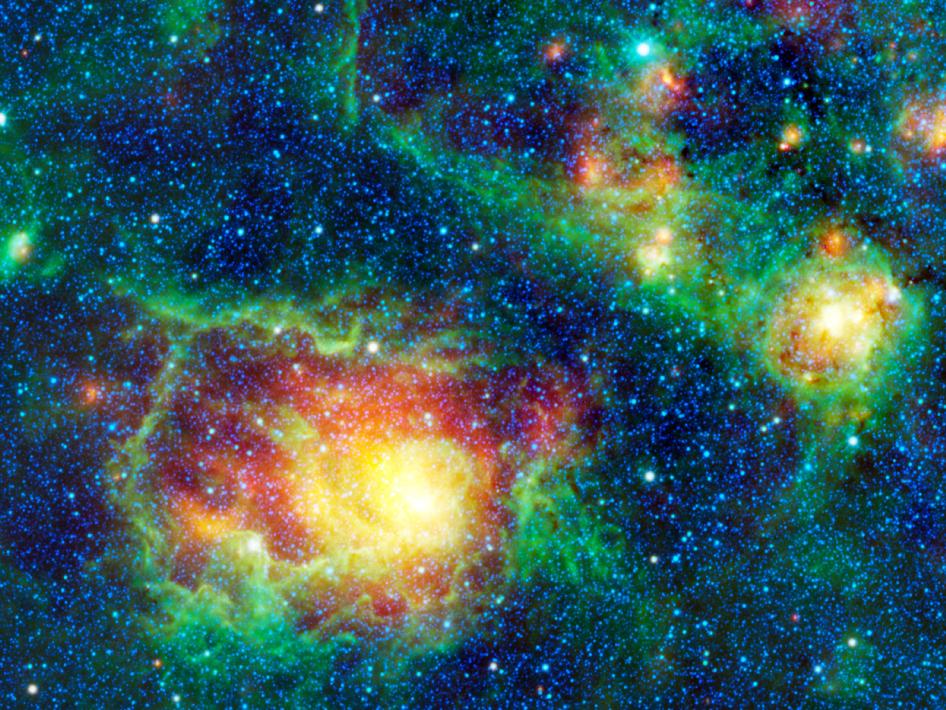The problem, other than the usual hype by places like Huffington Post along with mainstream media outlets, was this planet would have to be in the Öpik-Oort Cloud , which is itself a hypothesis.
What separates this hypothetical planet, which they called Tyche (why Greek, when the other planets are Roman? Read on!) from the more kookier 10th planet ideas (tenth, ninth - IAU, when I want your opinion on Pluto, I will let you know), especially as we approach Nirvana-for-kooks in 2012, is that these researchers laid out a specific way to test their hypothesis that isn't just mathematical nonsense.
I just wrote that the Oort Cloud is only hypothetical but there is a difference between a hypothesis we can scientifically infer and then 'anything is possible so I made up aliens' speculation used by amateurs - comets have to come from somewhere and the belief is that the Oort cloud has leftover remnants from when the solar system formed and, on occasion, another star or 'tidal' interactions with the Milky Way knocks some loose which become comets and fall toward our Sun. Otherwise, trillions of icy objects are clustered out at the edge of the solar system, where our star's gravity ends. Because of the much longer orbit compared to something like Halley's Comet, we may only see these comets once.
The researchers in the Icarus paper believe that the Oort cloud also contains a Jovian planet, which was once a binary companion to our Sun. This additional planet would be too far away, and therefore too faint, to be visible with our telescopes.
Why is this interesting now? Because we may have an answer sooner rather than later. Matese and Whitmire found a group of comets in their analysis that didn't act the way we would expect them to - not only did the comets have a more 'shallow' orbital tilt than what they should have if our solar system crossed the galactic plane and knocked them loose, but also 'a statistically significant signal' in the data leads them to believe a large object is acting on them. Their idea is it must be a large, Jupiter-sized planet and they calculated how much infrared radiation an object that size should emit, and further say it could have been detected by...
WISE
WISE is NASA’s Wide-field Infrared Survey Explorer satellite and the advantage it has over other missions is that, unlike visible light telescopes, which as I noted would not see an object so cold and distant, or infrared telescopes, which could detect the object if they looked in the right direction, WISE already looked in all directions - then it covered the entire sky again in two of its infrared bands a few months later. WISE would have seen a change in the apparent position of a large planet in the Oort cloud in that time, they write. As NASA says, the two bands used in the second sky coverage were designed to identify very small, cold stars, which are a lot like planets bigger than Jupiter, as the authors hypothesize Tyche to be.
How sensitive is WISE? In this video about asteroid discovery through the last few decades, you can see that when WISE comes online a lot more is noticeable:
NASA is not taking a stand on this 'tenth planet', a binary companion to the star we know and love - they say that it will take a while to sift through the data (the mission concluded in February) and nothing would be known until at least March, 2012. Individual researchers are quicker to dismiss the notion that we have found another planet based on those 100 signals. It's a valid hypothesis but too soon to get excited or throw it out.

Lagoon nebula taken by WISE. This view is looking toward the center of the Milky Way. Our solar system is located on one of the spiral arms, about halfway out from the center of the disk-shaped Milky Way galaxy. When we view the Milky Way from Earth, we are looking into the disk of the galaxy where stars are so numerous that they appear to us as a cloudy band of light stretching across the sky. The center of the Milky Way is located in the constellation Sagittarius, which is where the Lagoon nebula can be found. M8 is a favorite target for amateur astronomers because it can be easily seen with binoculars or a small telescope. The colors used represent specific wavelengths of infrared radiation. Blue and blue-green (cyan) represent 3.4- and 4.6-micron light, respectively. These wavelengths are mainly emitted by hot stars within the Milky Way. Green represents 12-micron light, which is emitted by the warm gas of the nebulae. Red represents the longest-wavelenth, 22-micron light emitted by cooler dust within the nebulae. Image credit: NASA/JPL-Caltech/UCLA
So why Tyche as a name, instead of something more Roman? Whitmire was also behind the 'Nemesis hypothesis' in the early 1980s, which believed a (different) companion to our Sun in the Oort cloud explained mass extinctions on the Earth. They named it Nemesis, for obvious reasons, and said it would have followed a highly elliptical orbit and would have knocked objects out of the Oort Cloud every 26 million years or so - resulting in comets in our solar system, some of which would have slammed into Earth.
It has been disproved that extinctions on Earth happen at regular intervals but it is still possible our Sun could have a binary companion with a period of a millions of years. So they named this one after Nemesis's nicer sister, Tyche, since it is clearly not killing anything here.
NOTES:
(1) John J. Matese and Daniel P. Whitmire, 'Persistent evidence of a jovian mass solar companion in the Oort cloud', Icarus Volume 211, Issue 2, February 2011, Pages 926-938 doi:10.1016/j.icarus.2010.11.009





Comments